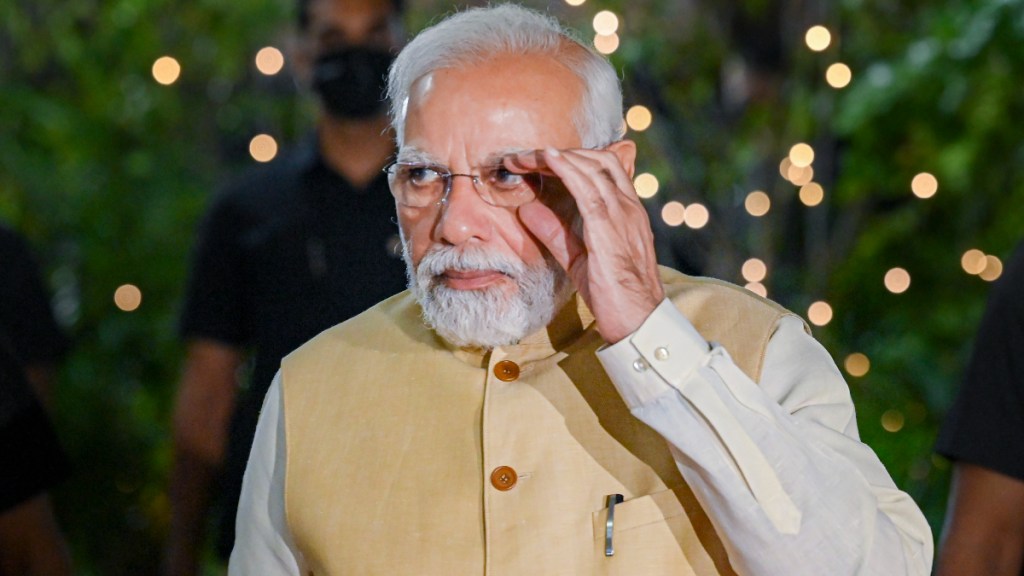The year was 2014. Manmohan Singh was scrambling to withstand the ‘Modi wave’ as the BJP went all guns blazing against the UPA government ahead of the Lok Sabha elections. Narendra Modi, the challenger, was going hammer and tongs against the incumbent government’s “socialist” model of governance. Subsidies, he said, were part of the problem. Promising fiscal prudence, Modi said that he would reform the subsidy ecosystem.
Cut to 2023 and the tables have turned, and how! The 2014 challenger is the Prime Minister of the country. In office for two consecutive terms, the Modi Cabinet just announced another subsidy under the PM Ujjwala scheme for LPG cylinders. The government may claim this to be a key step in the war against inflation, but the influence a populist decision such as this can have on the upcoming state and general elections cannot be negated.
Immediate outcomes aside, the decision reflects how political parties, irrespective of the government in power, cannot afford to negate them either. Be it 2014, 2019, or 2023, governments in India have always worked around the subsidy model. The three Fs of the subsidy model – fuel, food and fertiliser – have seen a sustained increase.
Subsidies on the rise under Modi govt
Barring the 2023-24 revision, the subsidy bill has been ballooning over the years. While the Modi government revised the 2023-24 subsidy bill to Rs 3.74 lakh crore, the 2022-23 period saw a subsidy bill of a staggering Rs 5.21 lakh crore – fertiliser (Rs 2,14,511.27 crore), food (Rs 2,87,179.34 crore) and petroleum (Rs 30,756.18 crore).
The war in Ukraine and other economic uncertainties triggered a surge in international commodity prices, at the same time, the government also had to bear the cost of the extension of the free food programme. In FY23, the Modi government spent 64 per cent more on subsidies than the budget estimates. In 2020-21, the government’s subsidy bill stood at Rs 7,06,006.53 crore.
The external factors – the coronavirus pandemic, the Ukraine war and weather – have impacted the subsidy bills for the last three years. The government has been very vocal about how its schemes helped to cushion the blows of these external shocks. From helping the poor during the pandemic to keeping the fertilizer supply intact despite the Russia-Ukraine conflict, the Modi government has taken credit, and deservedly so.
A story of contrasts
But all this comes at a cost. Prime Minister Modi’s anti-subsidy stance in the run-up to the 2014 Lok Sabha Elections, when seen in the context of the rising subsidy bill is a story of glaring disconnect. The subsidy bill, on the contrary, remains on the higher side when compared to the UPA era.
When Manmohan Singh demitted office in mid-2014, India’s subsidy bill stood at Rs 2.2 lakh crore for 2013-14. The UPA regime witnessed a sharp spike in the subsidies with a major chunk of allocation going to the 3 Fs. In 2003-04, the subsidy bill was Rs 43,535 crore. It rose to Rs 2.47 lakh crore in 2012-13. Long story short, there has not been a single year since 2013 when the subsidy bill has reduced.
To its credit, the Modi government has managed, over the years, to successfully implement the Direct Benefit Transfer (DBT), thus plugging the leakage of central funds. According to Union Finance Minister Nirmala Sitharaman, the Modi government has spent Rs 24.85 lakh crore on food, fuel and fertiliser subsidies as against Rs 13.9 lakh crore by the UPA government.
A forgotten promise
Yet, there has been a clear deviation from the promise to end subsidies. With the BJP perpetually in election mode, and its approach never to cede an inch of room to the Opposition to make inroads, the incumbent government is spending way more money than ever. Subsidies are here to stay — progress be damned!
In August 2022, PM Modi said that the subsidies are the ‘disorder’ of Indian politics. This is perhaps the closest the Prime Minister has come to what the BJP preached early into its first term in power.
When Modi came to power in 2014, he hinted at massive cut in subsidies to attract investment and help the economy. Then Finance Minister Arun Jaitley had also said that the government will go for an overhaul. But in 2016, Modi made a U-turn of sorts when he said that his government would rationalise subsidies instead of ending them.
“I am not arguing that all subsidies are good. My point is that there cannot be any ideological position on such matters. We have to be pragmatic. We have to eliminate bad subsidies, whether or not they are called subsidies,” PM had said at an event.
As the nuance of differentiating between a welfare scheme, subsidy and freebie comes down to the merit of the ‘greater good’, the moot point is that in an election year, it is all about winning and little about governance.

